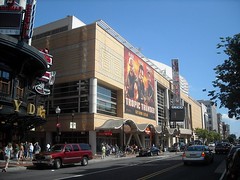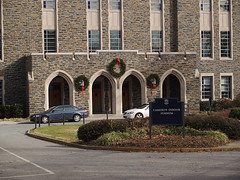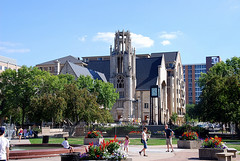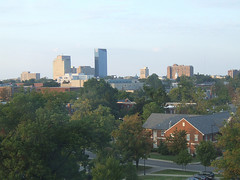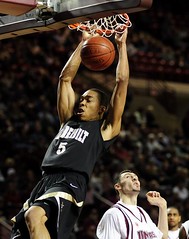Beware the Ides of March Madness: brackets based on walkable urbanism

Posted March 15, 2010 at 1:27PM
This time of year does funny things to me. I eat bad food in front of the television. I run weird calculations, some of which you’re about to see. I yell. I despair. I vanish at odd times of the day to find TV sets. I spend a lot of time in Lisa’s office where there is both a TV and another rabid fan just as crazy as I am. 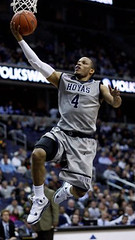 I really get insane after about the 50th sappy commercial for the upcoming Masters golf tournament on CBS (cue hushed voice: “a tradition unlike any other . . .”). Oh, please.
I really get insane after about the 50th sappy commercial for the upcoming Masters golf tournament on CBS (cue hushed voice: “a tradition unlike any other . . .”). Oh, please.
I do all this because I. Love. This Game. Not golf, mind you, which isn’t even a sport as far as I’m concerned, but college basketball. And the brackets are upon us, yes they are. I follow two teams closely, and they are both in the big dance and highly seeded this year. I’ll certainly be rooting for them.
But for whom do I cheer in the other games? There are a couple of schools I’ll cheer against because their fan bases are classless (and Lisa knows who they are), but the rest is kind of arbitrary, really. This got me thinking: what if I ranked schools on their neighborhoods, their relation (or not) to smart growth – I mean, it’s as good a reason as any, right?
So I took the top 16 seeds in the NCAA tournament, tracked down the location of the gyms in which they play home games, and ran Walk Score to get rough values for the walkability of each neighborhood. Here’s the ranking:
- Georgetown 98
- Kentucky 95
- Wisconsin 91
- Vanderbilt 85
- Kansas State 77
- Kansas 77
- Pittsburgh 72
- Syracuse 72
- Purdue 60
- Ohio State 54
- Villanova 52
- West Virginia 51
- Maryland 48
- New Mexico 48
- Baylor 34
- Duke 29
Walk Score considers anything scoring 90 or above to be a “walker’s paradise.” Above 70 is “very” walkable. Below 50 is car-dependant. (When I’m in Durham, I do walk to Duke’s Cameron Indoor Stadium from the hotel, but I guess there really isn’t a lot else in walking distance.)
And then I thought, well, some schools have off-campus arenas (like the downtown Verizon Center where my Hoyas play), and others put their arenas in strange corners, so maybe it’s not entirely fair. To address this, I also ran Walk Score for central points on the main campuses, in each case using the admissions office as my locale. I then averaged the two scores. This helped Syracuse and hurt Villanova:
- Georgetown 94
- Wisconsin 93
- Vanderbilt 88
- Kentucky 86
- Syracuse 79
- Pittsburgh 75
- Kansas State 74
- Ohio State 68
- Kansas 64
- Purdue 64
- West Virginia 62
- Maryland 60
- New Mexico 60
- Baylor 51
- Villanova 45
- Duke 39
Assuming all of these teams made the final sixteen (which of course they won’t), four in each of the regions where the NCAA has placed them, here’s how the official brackets would play out if results were based on walkable urbanism:
East
Wisconsin beats Kentucky, West Virginia beats New Mexico. Wisconsin then beats WVU to advance to the Final Four.
Midwest
Kansas beats Maryland, Georgetown beats Ohio State. Georgetown then beats Kansas to advance to the Final Four.
This is by far the weakest bracket for urbanism (and probably for basketball, too). Purdue beats Duke, Baylor edges Villanova. Purdue then beats Baylor to advance.
West
Vanderbilt beats Syracuse, Pitt squeaks by Kansas State. Vanderbilt beats Pitt to advance.
Final Four
Georgetown beats Vanderbilt easily, Wisconsin trounces Purdue. Your national championship then features the Hoyas versus the Badgers. Georgetown has the stronger arena for smart growth, but Wisconsin has slightly more urban destinations close to its campus. In a game for the ages, your urbanist winner is Georgetown – the arena is downtown on top of several Metro lines, walkable from my office and many others, and the main campus is in DC’s oldest and most walkable neighborhood. Hoyas win!
But wait, where’s North Carolina? 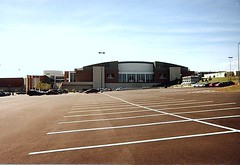 Seriously, I must have made a mistake . How could I leave out the Heels? I’ve looked all over the NCAA brackets and can’t find them anywhere. I don’t understand, is it a typo? Must be in here somewhere . . .
Seriously, I must have made a mistake . How could I leave out the Heels? I’ve looked all over the NCAA brackets and can’t find them anywhere. I don’t understand, is it a typo? Must be in here somewhere . . .
Incidentally, if you’re curious (I was), here’s how the top 16 seeded teams stack up by the NCAA’s official graduation success rate, based on the most recent official data:
- Duke 92%
- Villanova 92%
- Vanderbilt 85%
- Georgetown 82%
- Wisconsin 78%
- Pittsburgh 75%
- Kansas 73%
- Kansas State 62%
- Purdue 64%
- Ohio State 60%
- Syracuse 55%
- West Virginia 44%
- New Mexico 43%
- Baylor 36%
- Kentucky 31%
- Maryland 08% (not a typo)
UNC, had their team been good enough to make the tournament this year, would have ranked decently (75%) on graduation success, by the way. At least they have that to go with their trophy from last year. The Walk Score for the DeanDome, though, is only 38. The admissions office scores a much better 78, bringing the average up to 58. Not good enough to advance against stronger competition, just like real life this year.
